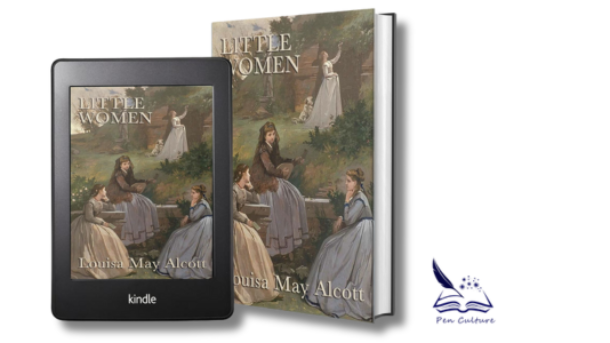Little Women by Louisa May Alcott, first published in 1868, is a timeless coming-of-age novel. It captures the essence of sisterhood and the complexities of womanhood. Set during the Civil War, it follows the lives of the four March sisters—Meg, Jo, Beth, and Amy. They navigate love, family, and personal growth. Celebrated for its rich characterizations and moral depth, Little Women remains a beloved classic. It speaks to readers of all ages.
Plot Summary
The story revolves around the March sisters living with their mother, Marmee, while their father is away at war. Each sister embodies unique traits. Meg dreams of marriage and family. Jo is fiercely independent and aspires to be a writer. Beth is selfless and devoted. Amy is artistic and ambitious. As they face the challenges of poverty and societal expectations, the sisters experience love, loss, and personal triumphs.
The novel beautifully illustrates their journeys from childhood to adulthood. It highlights the strength of their familial bonds through joy and hardship. One poignant moment is Beth’s illness, which profoundly affects the entire family, especially Jo.
Characters and Themes
Alcott’s characters are the heart of the story. Jo’s determination and refusal to conform make her a standout. Meg’s nurturing nature provides a rich tapestry of womanhood. Beth’s quiet strength and Amy’s growth also contribute. Their mother, Marmee, serves as a moral anchor, guiding the sisters through their struggles.
Major themes include family, sacrifice, and the roles of women in society. Alcott emphasizes the importance of moral integrity and the tension between personal ambition and societal expectations, particularly in Jo’s character. The theme of poverty and selflessness resonates throughout, showcasing the family’s resilience.
Style and Appeal
Alcott’s warm, accessible writing style invites readers into the sisters’ world. Though some find the moral lessons a bit didactic, they enhance the novel’s emotional depth. Little Women appeals to a broad audience, especially those who appreciate character-driven narratives with strong emotional arcs and feminist undertones.
Strengths and Weaknesses
The novel’s greatest strength lies in its relatable characters and their emotional journeys. The focus on sisterhood and family bonds deeply resonates with readers. Jo’s independence was groundbreaking for its time and continues to inspire.
But, some modern readers might find certain aspects overly moralistic or outdated, particularly about women’s roles. The episodic structure can lead to slower pacing at times, focusing more on domestic life than grand narratives.
Conclusion
Little Women endures as a classic, offering heartfelt insights into sisterhood, individuality, and personal growth. Alcott’s ability to create relatable characters and explore universal themes makes this novel a timeless read. Some see Little Women as a coming-of-age story. Others see it as a reflection on women’s evolving roles. Little Women continues to inspire and comfort readers across generations.
Rating: 4.5/5




